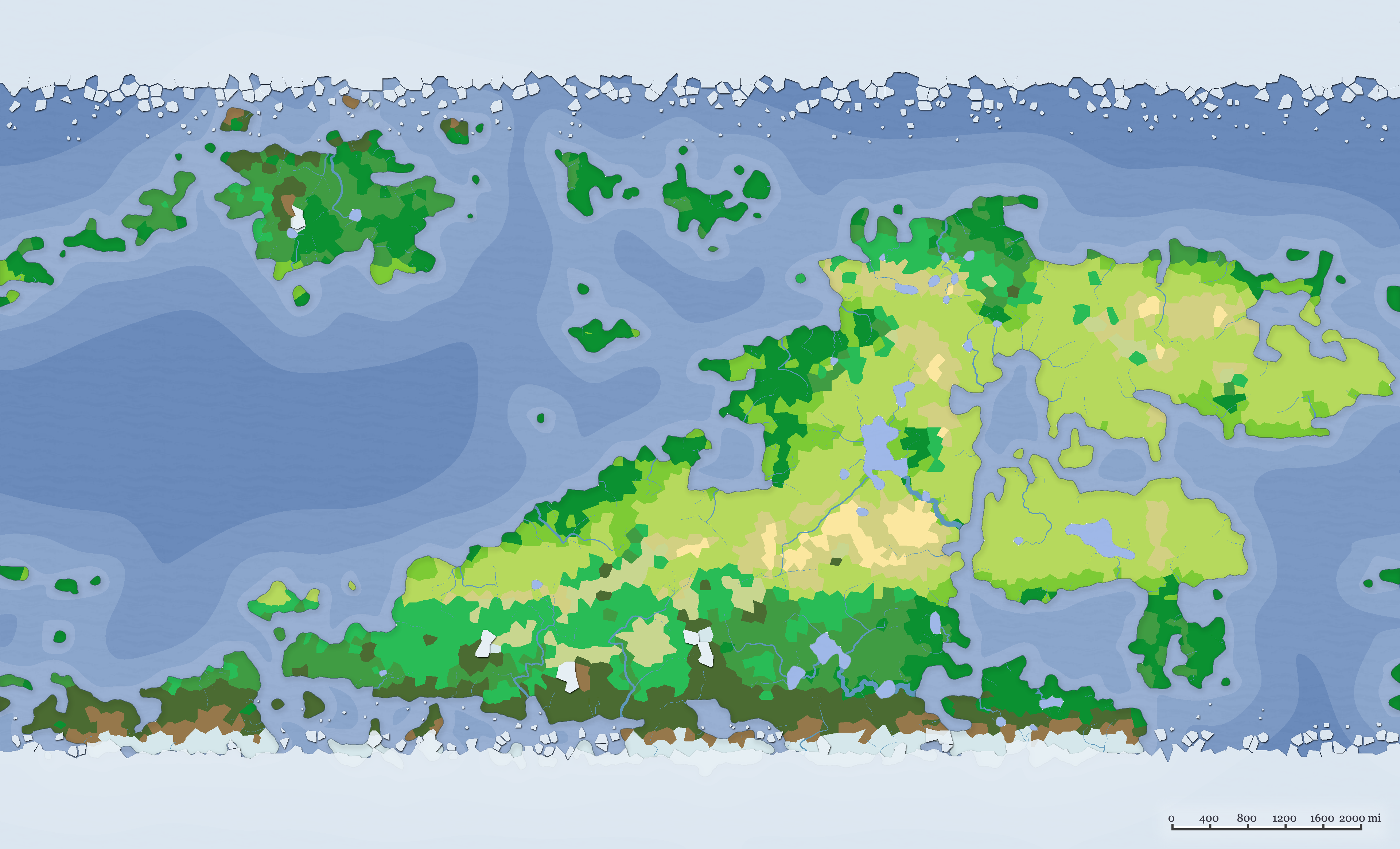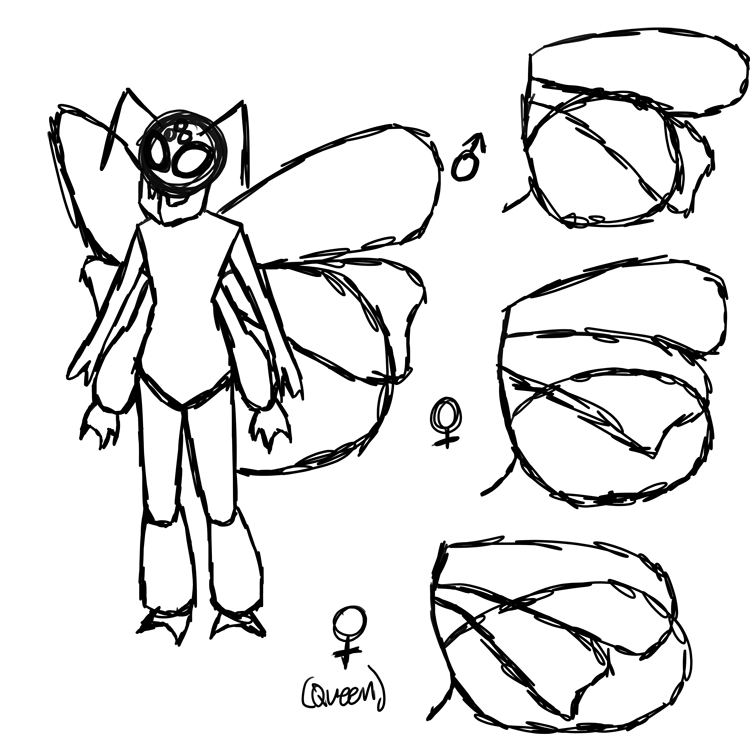Chrub
A species of large bee-like people who prefer warmer climes and are largely found in Sîtorhiâ. They are found in other parts of the world, of course, but that is where the largest concentration of hives can be found.
Chrub are one of the few species that have a limited ability to produce verbal speech, their primary languages consisting of a mixture of limited sounds, pheromones, and physical movements, often called "dances" by other species. Many species are unable to percieve their pheromones, leaving them unable to understand a significant portion of Chrub communications and leading to many historical misunderstandings.
Basic Information
Anatomy
Chrub Fullbody Sketch
by
IBB
A basic sketch of a typical Chrub, including variation in abdomen and wing length between sexes.
Additional Information
Perception and Sensory Capabilities
Chrub vision is similar to bees, in that they have a wider field of view (280º), and can see ultraviolet light, but struggle to see red. They have two compound eyes and a set of three smaller eyes that help them orient themselves in flight. They have very poor long-range vision, though their visual range extends up to about a mile away. They have faster reaction times than humans, though, as they process images much, much faster.
They primarily use their antennae to detect smells, but they are also useful in detecting sound. They also have tiny hairs all over their legs that help them sense sounds. Some chrub dislike when others touch these hairs, as it apparently messes with their hearing in ways some chrub don't like.
While they have a sense of taste, they don't rely on it nearly as much as smell. They can pick up on sweet, sour, bitter, and salt, though they are less sensitive to bitter flavors and much more sensitive to salty flavors. This has lead to some interesting inventions when it comes to other species' attempts to cook for chrub.
Civilization and Culture
Interspecies Relations and Assumptions
Many other species find it difficult to gauge a given Chrub's emotional state without being explicitly told. Chrub don't emote like most other species, with most of their emotions being expressed through pheromones rather than body language. This often leads to the misconception of Chrub as being "emotionless," and can lead to friction with species that emote more physically.
Genetic Ancestor(s)
Related Myths




I love how you utilized different aspects of bee life in creating this species--they smell with their antenna, they are sensitive to different flavors than other species, and males, females, and (female) queens have different physical characteristics (love the picture btw!). I especially like the inclusion of bee dances as part of their form of communication, as well as the details about interspecies miscommunication.